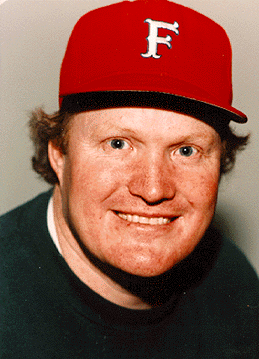
The University of Chicago Magazine
June 1997

For Kevin M. Murphy, PhD'86, economics is about labor. Pointing out that labor represents three-quarters of America's productive assets, he argues, "Human capital, investments in education and training, and accumulation of knowledge and skills--the whole labor-market side of things--is probably the most important part of the economy." Murphy, the George Pratt Shultz professor of business economics and industrial relations at the Graduate School of Business, has studied labor economics since his undergraduate days at UCLA. His work in wage inequality earned him the 1997 John Bates Clark Medal, awarded every two years to the best American economist under 40--putting Murphy in the company of such distinguished recipients as Paul Samuelson, AB'35; Milton Friedman, AM'33; and colleague and collaborator Gary Becker, AM'53, PhD'55. Like Becker, Murphy applies economic theory to social problems like addiction. But most of his research has focused on the nation's changing labor market. His key 1993 article, "Wage Inequality and the Rise in Returns to Skill," written with Chinhui Juhn, PhD'91, and Brooks Pierce, articulated "the dominant phenomenon" of the last quarter-century: the growing wage inequality between high- and low-skilled workers, whether skill level is measured by pay or by education. The trio found that between 1970 and 1989 the real wages of the median male worker decreased by 5 percent, while real wages for workers at the bottom tenth of the wage scale declined by 25 percent. Meanwhile, real wages for the top tenth rose by 15 percent. But the authors pointed out that it wasn't just a case of the poor getting poorer and the rich richer-the upper end of the middle class was making greater relative gains than the lower end. And it wasn't just an issue for people new to the labor market; it affected workers at all experience levels. The pervasiveness of the growing inequality, Murphy explains, meant that it couldn't be attributed to specific causes, like "something wrong with welfare or a family breakup at the bottom end, or something going on with tax structures and other things at the very top end." So Murphy has begun looking for fundamental economic changes. The central factor, he theorizes, can be found on the labor market's demand side. With the rise of new technologies and new industries, employers went in search of more highly skilled workers, shifting occupational distribution from blue- to white-collar jobs. At the same time, the industries that traditionally employed the least-skilled workers began to decline. "Retail trade has far less growth than most people think," Murphy explains, adding that there's been a "tremendous contraction in the low end of the manufacturing sector--basically the disappearance of apparel, footwear, textiles." Even in the service industry, most of the much-ballyhooed growth "has really been in the high end--in finance, insurance, real estate, professional services," says Murphy. He adds, though, that growth in wage inequality now seems to be tapering, partly because low-skilled workers are choosing to respond to the demand for higher skills. To stay competitive, workers have turned to higher education, both to learn skills and to earn what economists call the college premium: the earnings advantage that college grads have over their high-school counterparts. In the 1970s, as the Baby Boom cohort entered the labor market, the growing supply of skilled workers outpaced the growing demand, and the college premium was relatively low. But then demand continued to grow, and the next group to join the workforce was smaller. "The premium grew from around 40 percent in 1980 to 75, 78 percent, in the early '90s," says Murphy. Now, he thinks, such growth has run its course: "It's probably not going to continue to go up--and really hasn't gone up very much among younger workers over the last five years or so." Not only wages have been affected by changes in the labor market; so have employment opportunities. In a recent issue of American Economic Review, Murphy and fellow U of C economics professor Robert Topel examined trends in unemployment--defined as not working, but looking for work--and nonemployment--neither working nor looking. Murphy and Topel studied statistics for more than 800,000 men (traditionally more women choose not to work). In 1974, 2.3 percent of those men were unemployed, and 4.9 percent were nonemployed. By 1994, the percentage of unemployed men had risen to just 2.4 percent, but the percentage of nonemployed men had increased to 6.7 percent. Murphy attributes the high rate of nonemployment to the low number of job hours available to low-skilled workers, which, combined with low hourly rates, meant that "the incentives to get out and work had been greatly reduced over that period, and as a result, fewer and fewer were working." While continuing his work in labor economics, Murphy is also beginning some new undertakings. Currently on his plate is a project, planned with Gary Becker, on the economics of group behavior. They aim to determine how social influences such as peer pressure affect standard economic models for consumption patterns (fads like Beanie Babies or upscale coffeehouses, for example) and behavior (Murphy posits that the increase in out-of-wedlock births may reflect the dropping social cost of being an unmarried parent). With Robert Topel, Murphy will examine a wide range of behavioral trends that fall under the "Generation X" rubric: young adults taking longer to complete school and join the labor force, moving back home in their 20s and 30s, and going back to school at older ages. Murphy's approach will parallel his work on wage inequality. "We went out there to see what had been going on, and we saw some phenomena we thought were interesting and tried to explain them," he says. This new project "is another fishing expedition." --Kimberly Sweet Go to:Work on the Workforce
Kevin M. Murphy's made his name chronicling the divergence between the high and low ends of the labor market.
 Working-class hero: Kevin Murphy (pictured) reports that the demand for low-skilled workers has dwindled in recent decades.
Working-class hero: Kevin Murphy (pictured) reports that the demand for low-skilled workers has dwindled in recent decades.Also in Investigations:
Return to June 1997 Table of Contents